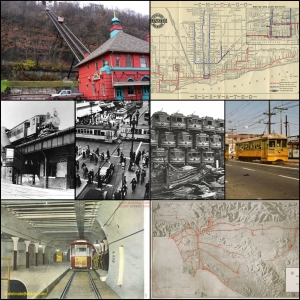Blog Exercise 3
During the 19th and 20th century, economic prosperity attracted unprecedented numbers of foreigners to immigrate to the United States, as industrialization in the U.S. began. The U.S. government conducted a survey of the land to the west in 1796. Under the Homestead Act of 1862, any citizen or immigrant intending to become a citizen could file an application to claim 160 acres of surveyed U.S. Government-owned land, and if they built a 12 by 14 house on the land and lived there for five years the land would become theirs. The Homestead Act of 1862 gave opportunity for citizens and immigrants to settle westward who could not have afforded to buy land otherwise. The U.S. Government wanted people to move West in order to “pascify” the Native Americans and to deal with the increasing number of immigrants. To encourage westward expansion, the government passed the Pacific Railway Act that gave land grants encompassing a section of land that stretched from the Atlantic to the Pacific Ocean to the railroad companies so that the companies would lay down a railroad system all the way across the U.S. The railroad companies sold their unused land and inflated prices. The money obtained from selling the millions of acres of land helped finance the construction of the railroads and then some. With easy access to the cheap land in the West, as well as new and fast way of obtaining manufactured goods (even kit houses) from the east via the railroad and through catalogue companies, westward expansion kicked into gear as the transcontinental railroad had been laid by May 1869. Other incentives to move west, even as far as California, included the California Gold Rush from 1848-1855. The efforts to make the entire U.S. accessible by rail allowed the railway to take over as the main form of transportation in the U.S. (replacing the former transportation means by water). Where ever the railroad went, so did people and this led to the development of many American cities such Chicago and Los Angeles. The prosperity of booming cities in America can often be traced back to their access to railways because the cities and their hinterlands acted as collection and distribution points for manufactured goods. The cities accessible by the railroad grew because the railroad brought people into cities and allowed for the quick transportation of goods in and out of the city, supplying the needs of a large population. With cities being dominated by transportation and industry, the conditions of the inner city began to decline. As the railroad allowed for the creation of great cities, it also allowed the upper-middle class to move out into suburbs which caused the inner city to suffer from no tax base. Four other transcontinental railroads were laid by 1900. The use of railways and the like around and inside cities, such as the underground subway in New York, which started out as a steam railroad, has proven to be useful in that it allows for maximum development of the city above ground without taking up room to provide transportation ways for the massive amount of people living there. With the exception of places like Manhattan, the railroads began to be replaced by cars in the 1930s as the main form of transportation after the Federal-Aid Road Act of 1916. A sharp decline in the use of railroads happened in the 1950s and 60s due to the Highway Trust Fund that financed the Interstate Highway System.
Transport in US cities, 19th and early 20th centuries – discuss. Usual rules apply…five hundred words, outside sources are fine, but must be cited…

Recent Comments